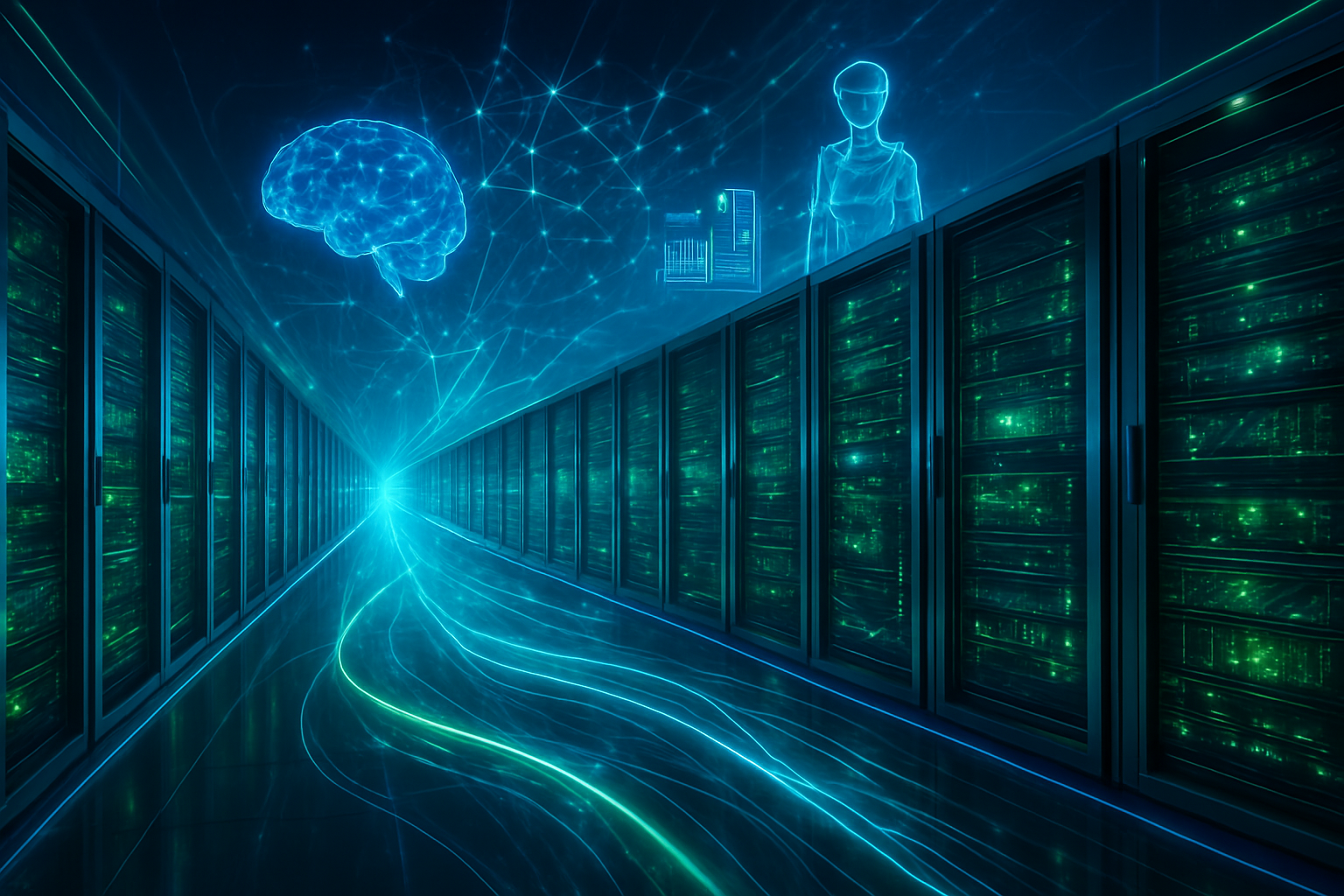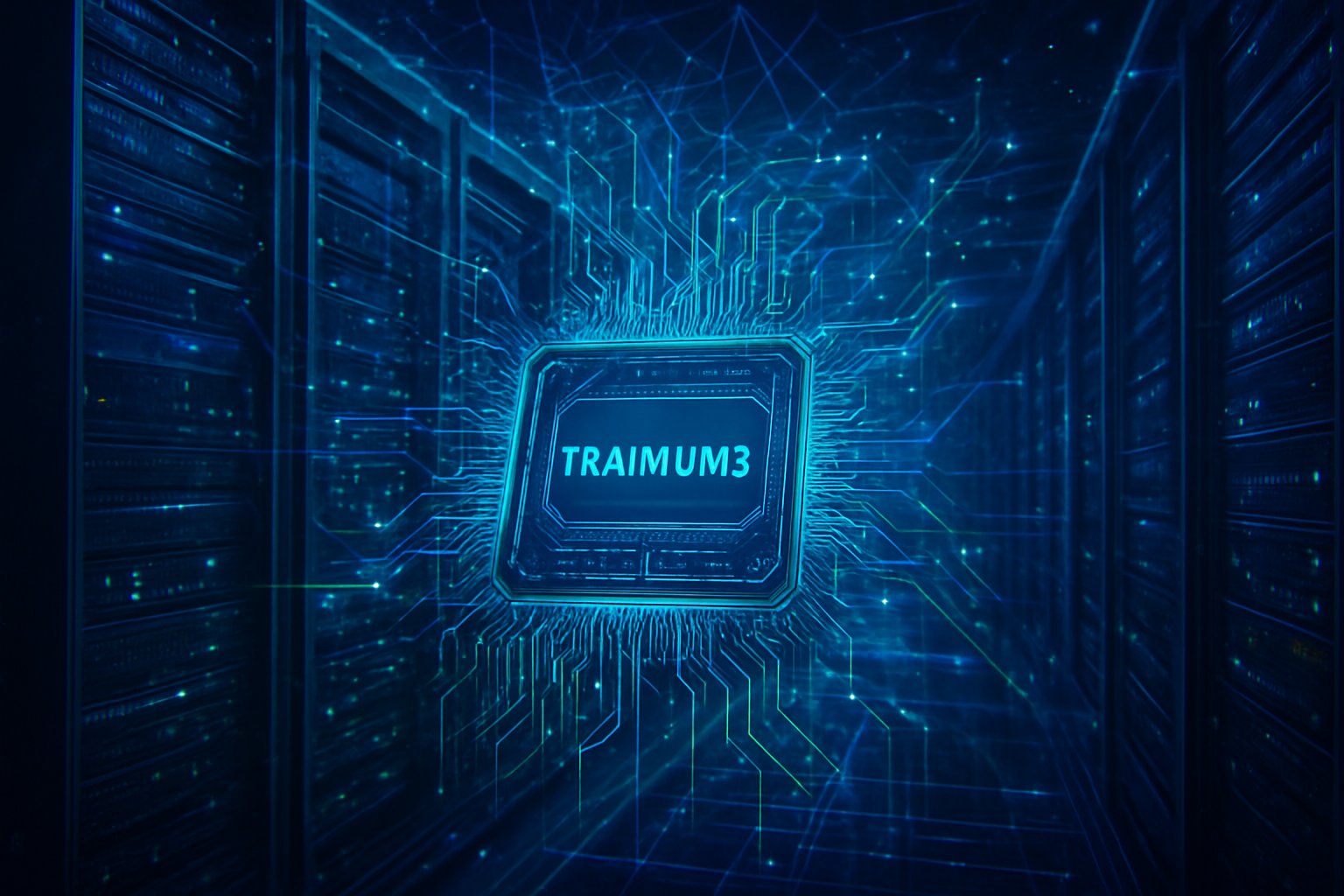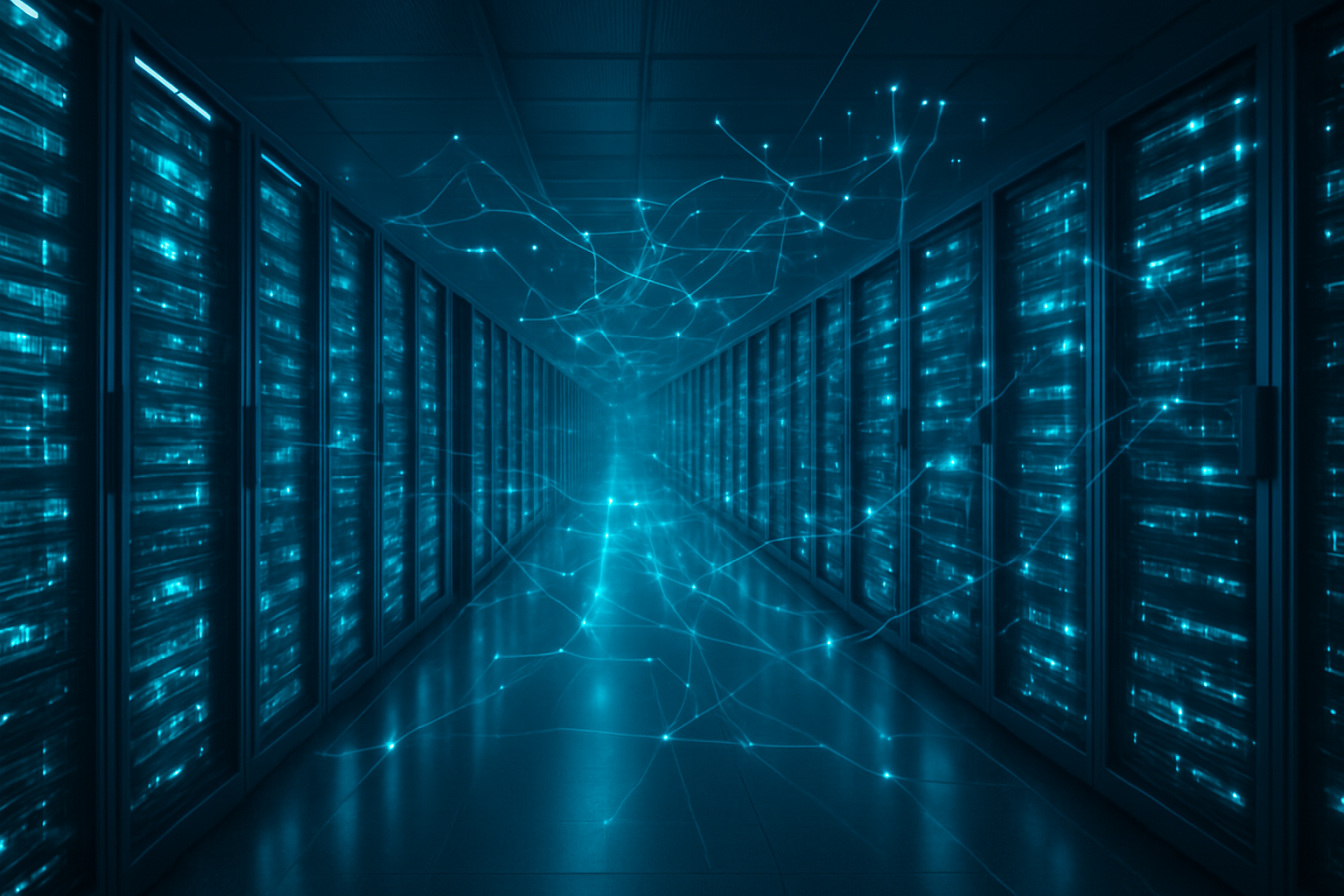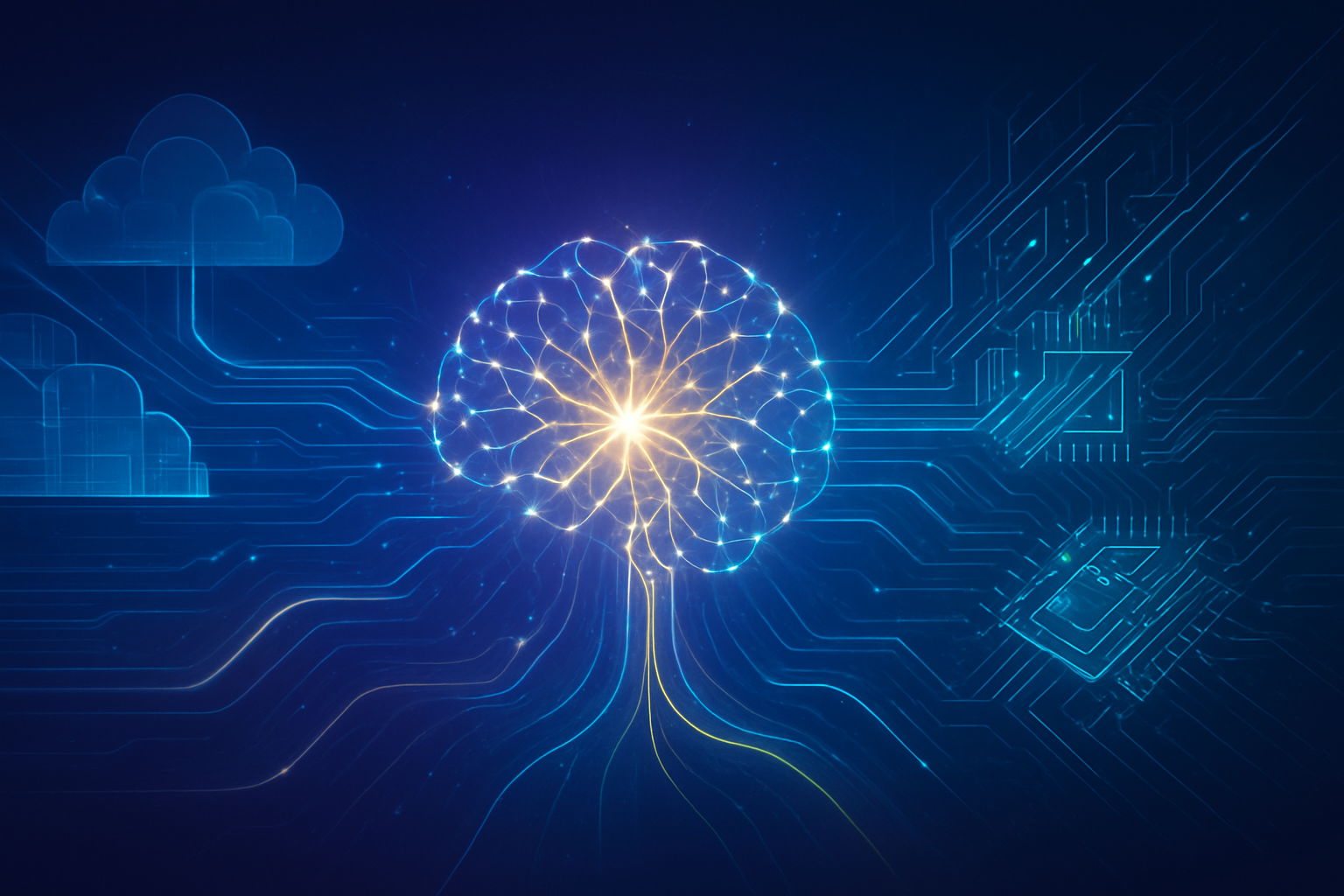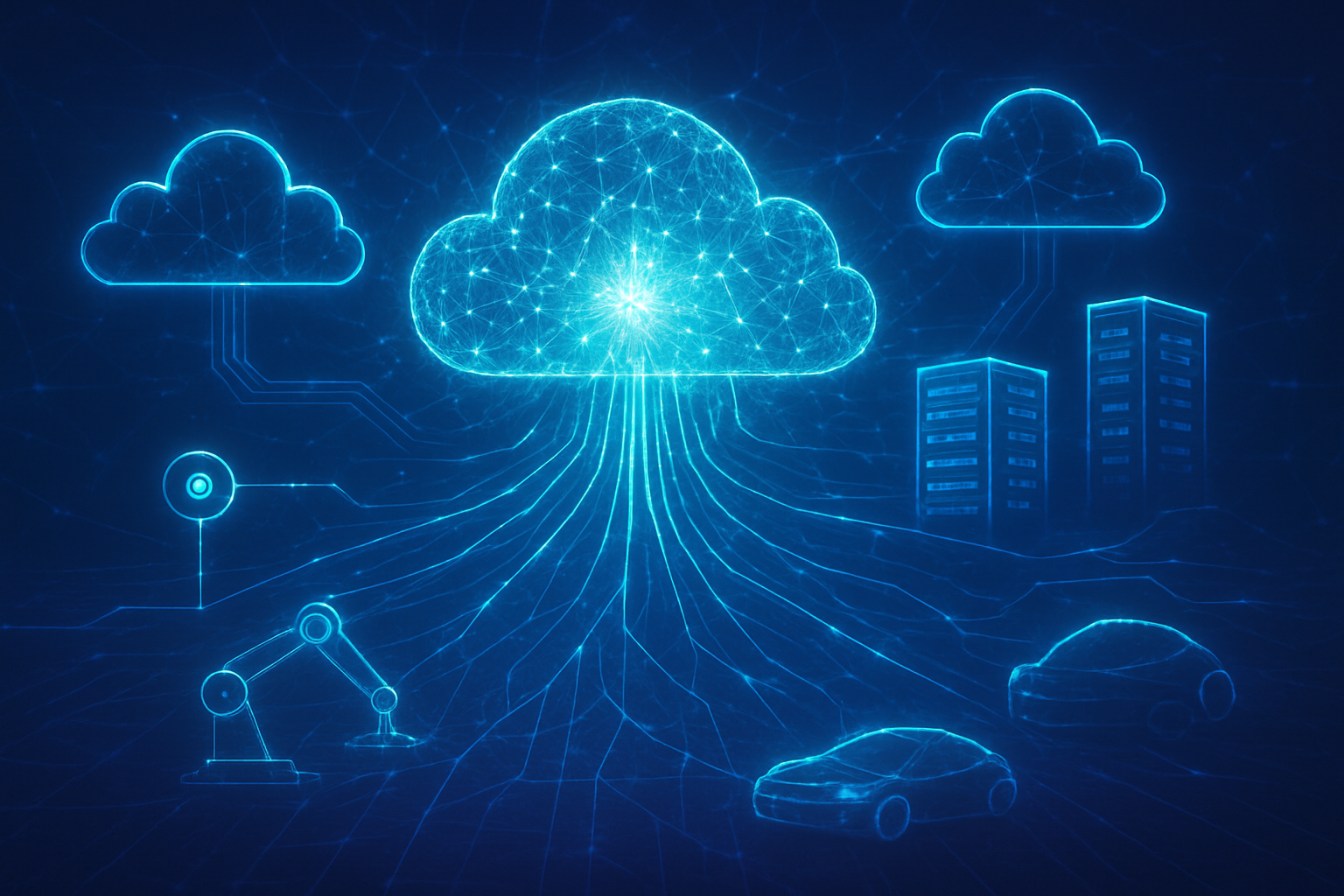Amazon Web Services (AWS) (NASDAQ: AMZN) has announced a significant expansion of its collaboration with Nvidia (NASDAQ: NVDA), revealing plans to integrate key Nvidia AI technology into future generations of its artificial intelligence computing chips and roll out an array of new, powerful servers. Unveiled at AWS's annual re:Invent conference in Las Vegas on Tuesday, December 2, 2025, these strategic moves are set to profoundly impact the landscape of AI development and deployment, promising to accelerate the training and inference of large AI models for enterprises worldwide.
This deepened partnership underscores AWS's aggressive strategy to cement its position as a leading provider of AI infrastructure, while also democratizing access to cutting-edge AI capabilities. By combining Nvidia's advanced GPU architectures and interconnect technologies with AWS's custom silicon and vast cloud infrastructure, the tech giants aim to create what Nvidia CEO Jensen Huang termed the "compute fabric for the AI industrial revolution," offering unprecedented performance and efficiency for the most demanding AI workloads.
Unprecedented Technical Synergy and Performance Leaps
The heart of this expanded partnership lies in AWS's deep integration of Nvidia's most advanced technologies into its burgeoning AI ecosystem. A cornerstone of this strategy is the adoption of NVLink Fusion within AWS's forthcoming Trainium4 AI chips, as well as its Graviton CPUs and the AWS Nitro System. NVLink Fusion, a hallmark of Nvidia's interconnect prowess, facilitates high-speed, direct connections between disparate chip types. This is a crucial innovation, allowing AWS to merge Nvidia's NVLink scale-up interconnect and MGX rack architecture with its custom silicon, thereby enabling the construction of massive AI servers where thousands of machines can communicate at unprecedented speeds—a prerequisite for efficiently training and deploying trillion-parameter AI models. This marks a significant departure from previous approaches, where such high-bandwidth, low-latency interconnects were primarily confined to Nvidia's proprietary GPU ecosystems.
Furthermore, AWS is significantly enhancing its accelerated computing offerings with the introduction of Nvidia's cutting-edge Blackwell architecture. This includes the deployment of NVIDIA HGX B300 and NVIDIA GB300 NVL72 GPUs. Notably, AWS is rolling out new P6e-GB200 UltraServers based on Nvidia Grace Blackwell Superchips, marking its first large-scale deployment of liquid-cooled hardware. This advanced cooling enables higher compute density and sustained performance, allowing up to 72 Blackwell GPUs to be interconnected via fifth-generation Nvidia NVLink and operate as a single, unified compute unit with a shared memory space. This capability, offering 360 petaflops of FP8 compute power and 13.4TB of HBM, drastically reduces communication overhead for distributed training, a critical bottleneck in scaling today's largest AI models.
AWS is also set to become the first cloud provider to offer Nvidia GH200 Grace Hopper Superchips with multi-node NVLink technology. The GH200 NVL32 multi-node platform connects 32 Grace Hopper Superchips, offering up to 20 TB of shared memory, and utilizes AWS's third-generation Elastic Fabric Adapter (EFA) for high-bandwidth, low-latency networking. The Grace Hopper Superchip itself represents a paradigm shift, integrating an Arm-based Grace CPU with a Hopper GPU on the same module, dramatically increasing bandwidth by 7x and reducing interconnect power consumption by over 5x compared to traditional PCIe CPU-to-GPU connections. This integrated design offers a more energy-efficient and higher-performance solution than previous architectures relying on discrete components.
While embracing Nvidia's advancements, AWS continues to push its own custom silicon. The Trainium3 chip, now generally available, powers new servers containing 144 chips each, delivering over four times the computing power of the previous Trainium2 generation while consuming 40% less power. These Trainium3 UltraServers boast up to 4.4x more compute performance and utilize Amazon's proprietary NeuronSwitch-v1 interconnect. Looking ahead, the Trainium4 chip, integrating NVLink Fusion, is projected to deliver 6x higher FP4 performance, 4x the memory bandwidth, and 2x the memory capacity compared to Trainium3, further solidifying AWS's dual strategy of internal innovation and strategic external partnership.
Initial reactions from the AI research community and industry experts have been overwhelmingly positive. Nvidia CEO Jensen Huang lauded the collaboration as creating the "compute fabric for the AI industrial revolution," emphasizing its role in accelerating new generative AI capabilities. AWS CEO Matt Garman highlighted the partnership's ability to advance AWS's large-scale AI infrastructure for higher performance and scalability. Experts view this as a "pivotal moment for AI," combining cutting-edge technology with AWS's expansive cloud capabilities. While Nvidia's ecosystem (CUDA, extensive tooling) remains dominant, AWS's commitment to purpose-built chips like Trainium is noted for offering significant cost savings, particularly for startups and smaller enterprises, as demonstrated by customers like Anthropic achieving up to 50% cost reductions in training.
Reshaping the AI Landscape: Impact on Companies, Giants, and Startups
The strategic announcements from AWS and Nvidia are poised to significantly reshape the competitive landscape for AI companies, major tech giants, and burgeoning startups alike. The dual strategy employed by AWS—both developing its own custom AI silicon like Trainium and Inferentia, and deeply integrating Nvidia's cutting-edge GPU and interconnect technologies—creates a dynamic environment of both fierce competition and synergistic collaboration.
Companies that stand to benefit are numerous. AWS (NASDAQ: AMZN) itself gains immense strategic advantages, securing greater control over its AI infrastructure's pricing, supply chain, and innovation roadmap through vertical integration. This strengthens its market positioning as a comprehensive cloud AI infrastructure leader, capable of offering both cost-effective custom silicon and the most advanced Nvidia GPUs. Nvidia (NASDAQ: NVDA) also continues to benefit from its strong market share and the pervasive CUDA software ecosystem, which remains a formidable moat. The deep integration of NVLink Fusion into AWS's future Trainium chips and the offering of Nvidia's latest Blackwell GPUs on AWS ensure Nvidia's continued revenue streams and pervasive influence within the cloud ecosystem. Furthermore, major AI companies and labs, such as Anthropic, Perplexity AI, and ServiceNow (NYSE: NOW), stand to benefit from increased choices and potentially lower costs for large-scale AI model training and inference. Anthropic, for instance, is a significant user of AWS's Trainium chips, reporting substantial cost reductions. Startups, too, will find enhanced accessibility to high-performance and potentially more affordable AI infrastructure, with programs like AWS Activate and Nvidia Inception providing crucial resources and support.
The competitive implications are profound. While Nvidia currently holds a dominant share of the AI chip market, AWS's custom chips, along with those from Google (NASDAQ: GOOGL) and Microsoft (NASDAQ: MSFT), are steadily chipping away at this lead by offering cost-effective and energy-efficient alternatives. Trainium3, for example, boasts up to a 50% cost reduction compared to traditional GPU systems. This trend of hyperscalers vertically integrating their AI hardware fosters a more fragmented yet highly innovative market. However, Nvidia's continuous innovation with new GPU generations (Blackwell, H200) and its deeply entrenched CUDA software ecosystem provide a resilient competitive edge, ensuring developer loyalty and a robust platform. AI labs now have more diverse options, allowing them to choose solutions based on specific workload requirements, price-performance ratios, or strategic partnerships, rather than being solely reliant on a single vendor.
This development also carries the potential for significant disruption to existing products and services. The drive for cheaper and more efficient AI training and inference, particularly with AWS's custom chips, democratizes access to advanced AI, lowering the barrier to entry for countless companies. This could accelerate the development and deployment of new AI applications across various sectors, potentially rendering less efficient existing products or services obsolete more rapidly. AWS's "AI Factories," designed to provide dedicated on-site infrastructure, could further disrupt how large organizations build and manage their AI infrastructure, accelerating deployment timelines by months or even years and reducing upfront capital investments.
Strategically, AWS is positioning itself as a leader in providing both cost-performance and comprehensive AI solutions, leveraging its vertical integration and a full stack of AI services optimized for its diverse hardware portfolio. Nvidia, on the other hand, solidifies its position as the foundational hardware and software provider for the most demanding AI workloads, ensuring its technology remains central to the "AI industrial revolution" across major cloud platforms.
A New Inflection Point: Wider Significance in the AI Landscape
The profound integration of Nvidia's cutting-edge AI technology into AWS's infrastructure, alongside the rollout of new, powerful servers and custom silicon, marks a pivotal moment in the broader AI landscape. This collaboration is not merely an incremental upgrade but a strategic maneuver that fundamentally reshapes the foundation upon which AI innovation will be built for years to come.
This development aligns perfectly with and significantly accelerates several major trends in the AI landscape. Foremost among these is the explosive growth of generative AI and large language models (LLMs). The unparalleled compute power and memory capacity of the new Nvidia Blackwell GPUs, coupled with AWS's scalable infrastructure, are indispensable for training and deploying multi-trillion parameter LLMs and supporting the rapidly evolving field of agentic AI. Furthermore, by offering these supercomputing-level capabilities through its cloud platform, AWS effectively democratizes access to advanced AI. This enables a broader spectrum of businesses, researchers, and developers—many of whom lack the capital for on-premise supercomputers—to tackle complex AI problems and accelerate their innovation across diverse sectors, from drug discovery with BioNeMo to robotics with Isaac Sim. The focus on efficient and scalable AI inference is also critical for moving AI from promising pilots to production-ready systems in real-world scenarios.
The impacts are far-reaching. For AWS customers, it translates to unprecedented processing power, faster training times, and improved cost-efficiency for AI workloads, simplified through services like Amazon SageMaker HyperPod. For Nvidia (NASDAQ: NVDA), the partnership solidifies its dominant position in high-performance AI computing, ensuring its latest and most powerful chips are widely available through the leading cloud provider and embedding its foundational technologies like NVLink Fusion into AWS's custom silicon. For the AI industry as a whole, this accelerates the global pace of innovation, pushing the boundaries of what's possible with AI. However, this also intensifies the "infrastructure arms race for AI" among cloud providers and chip manufacturers, with AWS actively developing its own custom chips (Trainium, Inferentia) to offer cost-effective alternatives and reduce dependency on external suppliers, creating a more competitive and innovative market.
Potential concerns include the risk of vendor lock-in due to the deep integration with Nvidia's hardware and CUDA software stack. While AWS aims to democratize access, the cutting-edge P6e-GB200 UltraServers and AI Factories are premium offerings, which may initially limit broad accessibility to only large enterprises. There are also questions about the centralization of AI infrastructure, as significant computing power becomes concentrated within a few dominant players, and ongoing supply chain dependencies for advanced chips. AWS's custom chips, while cost-effective, have also faced "compatibility gaps" with certain open-source frameworks, posing a challenge for developers accustomed to Nvidia's mature ecosystem.
In terms of comparisons to previous AI milestones, this development is a direct descendant and massive amplification of the breakthrough that saw general-purpose GPUs adopted for deep learning. It represents a leap from adapting GPUs for AI to designing entire systems (like the Grace Blackwell Superchip) and data center architectures (like liquid-cooled UltraClusters) specifically for the extreme demands of modern AI. Much like early cloud computing democratized access to scalable IT infrastructure, this partnership aims to democratize access to supercomputing-level AI infrastructure. Industry experts widely consider the introduction of Blackwell on AWS, coupled with integrated software and scalable infrastructure, as a new inflection point—a "game-changer for AI infrastructure." It signifies the transition of AI from a research curiosity to a foundational technology demanding dedicated, hyper-scale infrastructure, comparable in scale and impact to the initial breakthroughs that made deep learning feasible.
The Road Ahead: Future Developments and AI's Evolving Frontier
The deepened collaboration between AWS and Nvidia is not a static announcement but a blueprint for a rapidly evolving future in AI. Both near-term optimizations and long-term strategic shifts are anticipated, promising to redefine AI infrastructure, applications, and services.
In the near term, we can expect immediate enhancements in AI accessibility and efficiency. Nvidia Neural Interface Models (NIM) are already available on AWS, enabling more efficient and scalable AI inference for complex models. Nvidia AI Blueprints are ready for instant deployment, facilitating real-time applications like video search and summarization agents. The integration of Nvidia BioNeMo AI Blueprints with AWS HealthOmics is set to accelerate drug discovery, while Nvidia Isaac Sim's expansion to AWS, leveraging EC2 G6e instances with Nvidia L40S GPUs, will provide a robust environment for simulating and testing AI-driven robots and generating synthetic training data. Furthermore, the Nvidia CUDA-Q platform's integration with Amazon Braket opens doors for hybrid quantum-classical applications. The rollout of new P6e-GB300 UltraServers, powered by Nvidia's Blackwell-based GB300 NVL72 platform, will immediately address the demand for high GPU memory and compute density, targeting trillion-parameter AI inference.
The long-term strategic vision is even more ambitious, revolving around deeper integration and the creation of highly specialized AI infrastructure. AWS will integrate Nvidia NVLink Fusion into its custom silicon roadmap, including the upcoming Trainium4 chips and Graviton CPUs, marking a multi-generational collaboration designed to accelerate cloud-scale AI capabilities. A key initiative is the launch of AWS AI Factories, which will deliver dedicated, full-stack AI infrastructure directly into customers' data centers. These factories, combining Nvidia accelerated computing, AWS Trainium chips, and AWS AI services, are designed to provide secure, regionally sovereign AI infrastructure for governments and regulated industries. Project Ceiba, a monumental collaboration between Nvidia and AWS, aims to build one of the world's fastest AI supercomputers, hosted exclusively on AWS, utilizing Nvidia GB200 Grace Blackwell Superchips to push the boundaries of AI research across diverse fields. AWS is also planning a long-term rollout of "frontier agents" capable of handling complex, multi-day projects without constant human involvement, from virtual developers to security and DevOps agents.
These advancements are poised to unlock transformative potential applications and use cases. In healthcare and life sciences, we'll see accelerated drug discovery and medical technology through generative AI microservices. Robotics and industrial automation will benefit from enhanced simulation and testing. Cybersecurity will leverage real-time vulnerability analysis. Software development will be revolutionized by autonomous AI agents for bug fixing, security testing, and modernizing legacy codebases. The public sector and regulated industries will gain the ability to deploy advanced AI workloads locally while maintaining data sovereignty and compliance.
However, several challenges need to be addressed. The sheer complexity of deploying and managing diverse AI models at scale requires continuous testing and robust inference workload management. Ensuring data quality, security, and privacy remains paramount, necessitating strict data governance and bias mitigation strategies for ethical AI. The rapid growth of AI also exacerbates the talent and skills gap, demanding significant investment in training. Cost optimization and GPU supply constraints will continue to be critical hurdles, despite AWS's efforts with custom chips. The intensifying competitive landscape, with AWS developing its own silicon, will drive innovation but also require strategic navigation.
Experts predict a "paradigm shift" in how AI infrastructure is built, deployed, and monetized, fostering an ecosystem that lowers barriers to entry and accelerates AI adoption. Nvidia CEO Jensen Huang envisions an "AI industrial revolution" fueled by a virtuous cycle of increasing GPU compute. AWS CEO Matt Garman foresees an era where "Agents are the new cloud," highlighting the shift towards autonomous digital workers. The competition between Nvidia's GPUs and AWS's custom chips is expected to drive continuous innovation, leading to a more fragmented yet highly innovative AI hardware market. The next era of AI is also predicted to feature more integrated service solutions, abstracting away infrastructure complexities and delivering tangible value in real-world use cases, necessitating deeper partnerships and faster product cycles for both Nvidia and Amazon.
The AI Industrial Revolution: A Comprehensive Wrap-up
The expanded collaboration between Amazon Web Services (AWS) (NASDAQ: AMZN) and Nvidia (NASDAQ: NVDA), announced at re:Invent 2025, represents a monumental leap forward in the evolution of artificial intelligence infrastructure. This partnership, built on a 15-year history, is poised to redefine the capabilities and accessibility of AI for enterprises and governments worldwide.
Key takeaways from this development include the introduction of AWS AI Factories, offering dedicated, full-stack AI infrastructure within customers' own data centers, combining Nvidia's advanced architectures with AWS's custom Trainium chips and services. The deep integration of Nvidia's cutting-edge Blackwell platform, including GB200 Grace Blackwell Superchips, into AWS EC2 instances promises unprecedented performance for multi-trillion-parameter LLMs. Crucially, AWS's adoption of NVLink Fusion in its future Trainium4, Graviton, and Nitro System chips signals a profound technical synergy, enabling high-speed interconnectivity across diverse silicon. This is complemented by extensive full-stack software integration, bringing Nvidia Nemotron models to Amazon Bedrock and GPU acceleration to services like Amazon OpenSearch. Finally, Project Ceiba, a collaborative effort to build one of the world's fastest AI supercomputers on AWS, underscores the ambition of this alliance.
This development holds immense significance in AI history. It fundamentally democratizes access to advanced AI, extending supercomputing-level capabilities to a broader range of organizations. By integrating Blackwell GPUs and a comprehensive software stack, it will accelerate generative AI development and deployment at an unprecedented scale, directly addressing the industry's demand for efficient, scalable inference. The collaboration sets new industry standards for performance, efficiency, and security in cloud-based AI infrastructure, reinforcing Nvidia's position while enabling AWS to offer a powerful, vertically integrated solution. The introduction of AI Factories is particularly noteworthy for enabling sovereign AI capabilities, allowing regulated industries to maintain data control while leveraging cutting-edge cloud-managed AI.
Looking at the long-term impact, this partnership is expected to reshape AI economics, offering cost-effective, high-performance alternatives through AWS's dual strategy of custom silicon and Nvidia integration. AWS's move towards vertical integration, incorporating NVLink Fusion into its own chips, enhances its control over pricing, supply, and innovation. This will broaden AI application horizons across diverse sectors, from accelerated drug discovery to advanced robotics and autonomous agents. Enhanced security and control, through features like AWS Nitro System and Blackwell encryption, will also build greater trust in cloud AI.
In the coming weeks and months, several areas warrant close attention. Watch for the general availability of new Nvidia Blackwell-powered GPUs on AWS. Monitor progress and specific deployment dates for AWS's Trainium4 chips and their full integration with NVLink Fusion, which will indicate the pace of AWS's custom silicon development. Observe the expansion and customer adoption of AWS AI Factories, especially in regulated industries, as their success will be a key metric. Keep an eye on further software and service enhancements, including more Nemotron models on Amazon Bedrock and deeper GPU acceleration for AWS services. Finally, follow updates on Project Ceiba, which will serve as a bellwether for the most advanced AI research and supercomputing capabilities being built on AWS, and anticipate further significant announcements at AWS re:Invent 2025.
This content is intended for informational purposes only and represents analysis of current AI developments.
TokenRing AI delivers enterprise-grade solutions for multi-agent AI workflow orchestration, AI-powered development tools, and seamless remote collaboration platforms.
For more information, visit https://www.tokenring.ai/.
